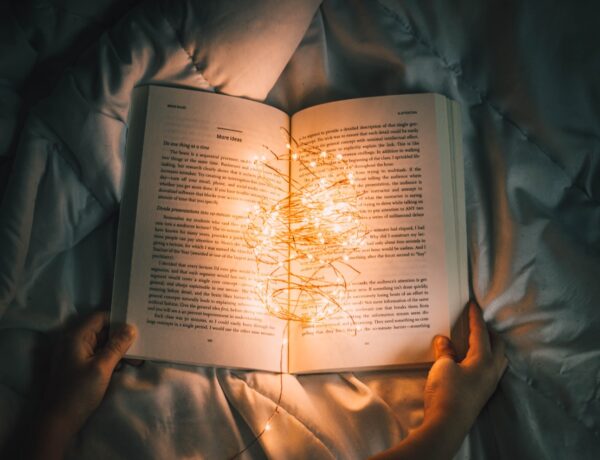Finding that sweet spot in the day when words seem to flow effortlessly and ideas spark like fireworks – that’s the quest for a writer’s ‘creative peak’. It’s that elusive time when the mind is most alert, imaginative, and ready to weave narratives.
For every writer, this peak time can be a key to unlocking greater productivity and creativity. But it’s not the same for everyone; it shifts and changes from person to person. The trick lies in identifying this golden hour. It’s a bit like being a detective in one’s own life, looking for clues to when the mind feels most vibrant and the imagination most vivid.
Understanding and tapping into this personal peak writing time can transform the writing experience, turning it from a struggle into a period of fruitful and enjoyable creation. This exploration is about helping uncover that perfect time for writing, ensuring every word counts and every creative session is as productive as it can be.
Understanding Your Internal Clock
Every individual operates on an internal clock, a circadian rhythm, that dictates their natural cycle of alertness and drowsiness throughout the day. This rhythm, deeply ingrained in human biology, plays a significant role in determining energy levels, mood, and even creativity. It’s fascinating how this internal clock can influence one’s ability to think, create, and express. For writers, understanding this rhythm can be the key to unlocking their most productive and creative periods.
Observing and understanding one’s own natural patterns and tendencies requires a bit of self-awareness and reflection. Some people find their minds sharpest in the early morning, basking in the quiet and stillness of dawn. Others might find their creative energies peaking in the hustle and bustle of the afternoon or in the tranquil hours of the night. It’s about noticing those times when thoughts seem clearer and words flow more freely.
To effectively track and analyze personal productivity and creativity levels, one can adopt a simple approach of keeping a journal or log. In this journal, note the times of day when writing feels most natural and when it feels like an uphill battle. Include details about the environment, mood, and even diet, as these factors can also influence one’s creative output. Over time, patterns may emerge, indicating the most fertile periods for writing.
Another strategy is to experiment by shifting writing sessions to different times of the day over several weeks. This can help in pinpointing when the mind is most receptive and agile. There’s also a place for technology here; numerous apps and tools are available that can help track productivity and identify peak creative times.
Understanding one’s internal clock isn’t just about finding the right time to write. It’s also about aligning with natural rhythms, leading to a more harmonious and less stressful writing experience. By tuning into these rhythms and recognizing personal productivity patterns, writers can create a more effective and enjoyable writing practice, tailored to their unique circadian rhythm.
Factors Influencing Your Creative Peak
Numerous factors play a role in determining an individual’s best time to write, and these extend beyond the internal clock. The environment, daily responsibilities, mental state, and even external commitments collectively influence when one might reach their creative peak.
The environment, for instance, is a crucial factor. A noisy, chaotic setting might stifle creativity for some, while others might find it stimulating. The key is to understand what kind of surroundings fuel one’s creativity – be it the quiet of a home office, the buzz of a coffee shop, or the tranquility of a park.
Daily responsibilities, including work and personal tasks, also play a significant role. For many, these responsibilities dictate the structure of the day, leaving only specific windows available for writing. Finding a time that aligns with these responsibilities while still respecting one’s natural creative rhythm can be challenging.
Mental state is another vital consideration. Stress, fatigue, and emotional well-being greatly impact creativity. A mind burdened by stress or exhaustion is less likely to produce its best work. Hence, choosing a time when one feels mentally fresh and relaxed is important.
External factors such as family obligations, work commitments, and social life can also dictate the feasibility of certain times for writing. Balancing these external demands with the need for focused, quiet time to write requires negotiation and planning. It might involve communicating with family members to ensure uninterrupted time or rearranging social engagements to carve out regular writing slots.
To balance these various factors, it’s helpful to prioritize and set clear boundaries. This might involve designating specific times as ‘writing time’ and communicating this to others to minimize interruptions. It could also mean being flexible and open to adjusting one’s writing schedule to accommodate unexpected changes or responsibilities. Additionally, taking care of one’s mental and physical health can enhance overall productivity and creativity, making the time spent writing more effective.
Experimenting and Adapting Your Writing Schedule
Experimentation is a crucial step in finding that perfect writing schedule. It’s like trying on different clothes to see what fits best; sometimes, it takes a few tries to discover the most comfortable and effective writing time. Experimenting with writing at various times of the day can yield surprising results. Morning sessions might reveal a fresh, energetic mind, while evenings could unveil a more reflective and deep-thinking self. The key is to approach this experimentation with an open mind and a willingness to adapt.
Flexibility in one’s writing schedule is just as important as experimentation. Life is dynamic, and circumstances change – what works today might not be feasible tomorrow. Being rigid in a writing schedule can lead to unnecessary stress and hinder creativity. It’s about finding a balance that accommodates life’s unpredictability while still maintaining a regular writing practice. This might mean adjusting writing times to cater to changing work schedules, family commitments, or even shifts in energy levels.
Once a peak creative time is identified, creating a conducive writing environment during this period can significantly enhance productivity. This might involve minimizing distractions by turning off phones, setting up a comfortable and inspiring workspace, or even using ambient noise or music if that aids concentration. The goal is to make this time and space sacred for writing, a period where the focus is solely on letting the creative juices flow.
Finding the best time to write really boils down to a bit of personal detective work. It’s all about experimenting with different times, staying flexible when life throws curveballs, and carving out a little nook that’s all about inspiring those creative vibes. Think of it like a fun experiment – with a bit of mixing and matching, and maybe a few false starts, you’ll eventually hit upon a writing rhythm that clicks perfectly with your life and lights up your creative spark.




No Comments